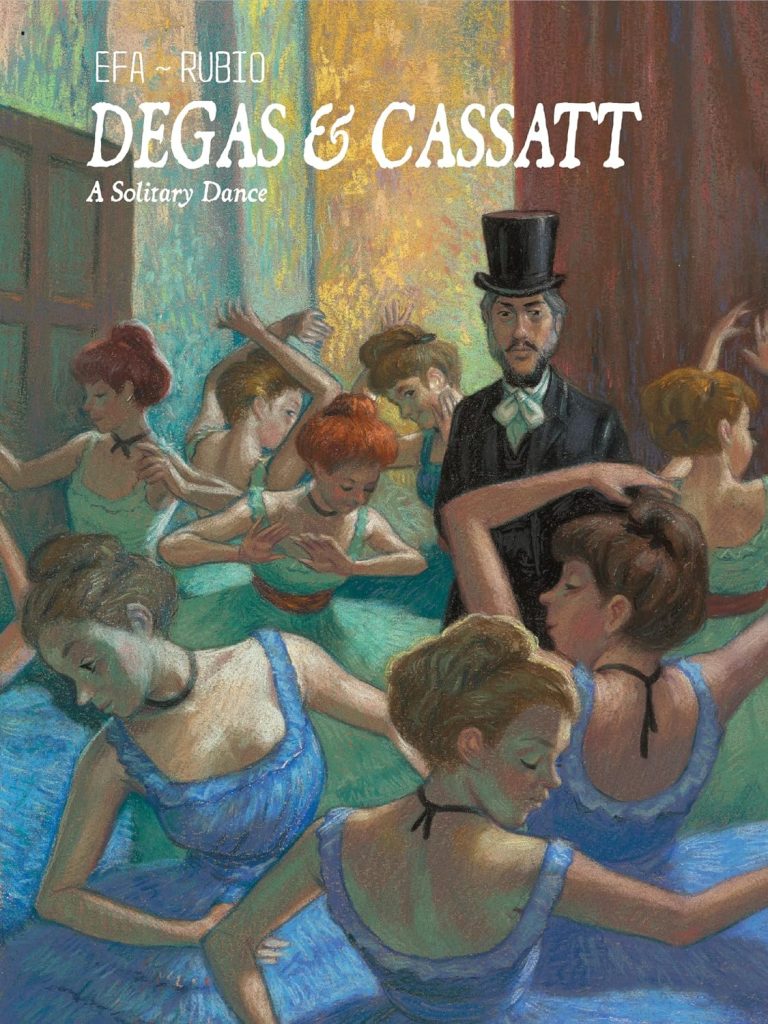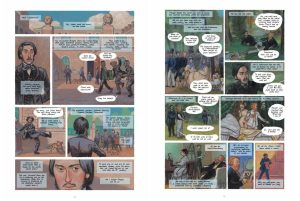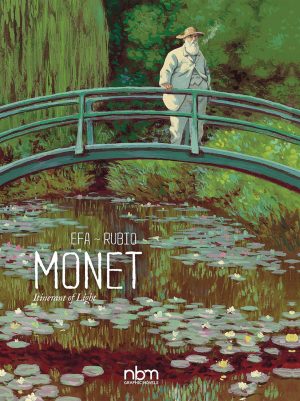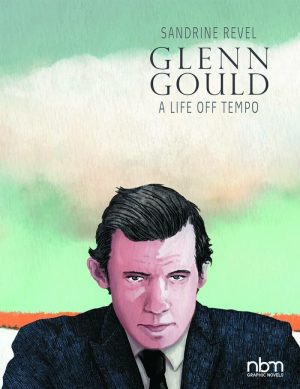Review by Frank Plowright
The back cover blurb considers the life of Impressionist founder Edgar Degas as steeped in contradictions, and these form the foundation of this compelling biography from Spanish creators Salva Rubio and Efa (Ricard Fernandez), the third of their collaborations to be translated into English.
English language Publishers NBM add the name of Mary Cassatt to the title, she being the American woman Degas loved, yet never pursued. It’s accurate in representing her meaning to him, yet a mistake for her presence being only to frame Degas. Her own considerable achievements are just mentioned over a page toward the end. She’s introduced in the opening chapter, listening to unseen people speculating about Degas as she visits his Monmartre grave in old age.
Rubio certainly doesn’t shy away from Degas’ unsympathetic qualities. We first see him as a boy in 1845, haranguing an art collector who’s refused to loan an important picture to an exhibition. Degas is certain this is wrong, just as he’s certain about what constitutes worthy art. The sample page from early in the book reveals his scathing views on many whom history would consider his contemporaries, yet also the certainty he’ll attain the high standards to which he holds himself. Rubio chooses to have Degas speak for himself, always risky in biographies, but noting a convincing translation from Edward Gauvin, the voice is authentic, credible and revealing. The same applies to that of Cassatt, as this is a shared narrative, with chapters alternating their views and experiences.
Efa’s art attractively reflects the impressionistic style eventually favoured by Degas, and it’s cleverly playful. The opening panel of the right sample page references Manet’s Concert in the Tuileries Gardens, and the second poses Degas and Edouard Manet as if in Manet’s famous painting Le Déjeuner sur l’herbe. Readers with a deeper background in art history may recognise other homages, and visual metaphor is also used. Even when not producing these his sense of composition is refined, every panel well considered in what’s a set of outstanding pages.
The way Degas is portrayed reinforces the criticisms of him. Rubio considers him as manipulative in using people for his own purposes, while Manet believes him incapable of loving a woman. Whatever the circumstances Rubio has Degas as keen to impress, whether with knowledge, witticism or his painting, and all three are applied to his awkward early meetings with Cassatt, when has no idea of how to move beyond. He does have an occasional soft side, revealed through Cassatt’s observations, yet it’s far outweighed by monstrous behaviour. There are people who eventually alienate everyone they ever knew, and Degas appears to be among them, his life noted by Rubio as defined by loneliness.
Despite clocking in at fewer than 80 story pages there’s never a feeling of compression, nor of not knowing Degas, his personality, his work and his reputation. Understanding him is a different matter, and Rubio makes you wonder if anyone did. He’s researched well and come to his own conclusions, so the writing is insightful and well considered, while the art is thoughtful and sparkling, making for a phenomenal biography.







